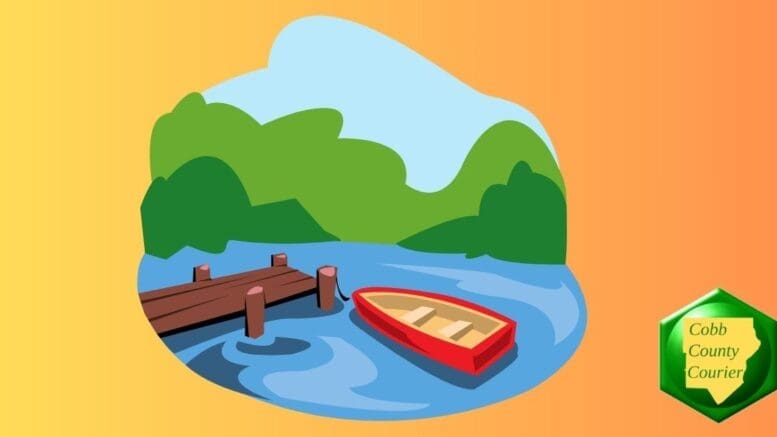By John A. Tures, Professor of Political Science, LaGrange College
Every year, we are treated to “Shark Week,” on the Discovery Channel, while other networks and channels cash in by playing “Jaws” “Meg” movies and sequels, along with the films like “Deep Blue Sea” and the campy “Sharknado” series. But what they should have is “Lake Week,” as freshwater bodies of water can be deadlier than both sharks, and even the ocean’s rip currents. Swimmers need to keep their eye on Lake Acworth, Lake Allatoona, every Georgia lake, or any lake in the USA. Here’s why.
There was no shortage of drowning deaths in Georgia’s lakes over the Fourth of July Weekend, according to the WRDW Network. According to WJBF, “Georgia recorded 16 boating-related deaths and 53 drownings. Preliminary figures for 2024 suggest a similarly grim trend, with at least 16 boating fatalities already—including three reported drownings at Lake Lanier.” Estimates from Atlanta News First found that there were 57 drownings and 20 boating accidents on Georgia lakes.
We’re not the only ones with lake drowning and boating accidents on freshwater. The Georgia lakes, plus Lake Michigan deaths alone, would top ocean deaths. Combining all of the Great Lakes drownings shows the magnitude of how deadly lakes can be.
According to the U.S. Lifesaving Association, an estimated 100 people drown each year in ocean currents, while the National Weather Service puts the fatality numbers for surf zones at 36.
Shark deaths in the U.S. average one every other year. In 2024, there were 47 attacks worldwide (28 in the U.S.) with four deaths, one in the USA, according to the Florida Museum.
So why are lakes deadlier? They have sneaky rip currents that are harder to spot, waves are smaller, but stronger than you think, and saltwater has buoyancy that freshwater lakes, according to MI Blue Daily. Plus, the placid look of lakes, with shore you can spot on both sides (unlike oceans) make swimming look safe than you would think. Murky waters make it hard to judge the depth, hard debris like logs, and those scary undercurrents.
“One of DNR’s key messages….is to wear a life jacket when you’re out on the water. The U.S. Coast Guard said in 2023, 90% of people who drowned on lakes and rivers were not wearing a life jacket,” Atlanta News First reported this year. ““If you’re not a good swimmer, that water is not forgiving,” said Col. Mike England with Georgia DNR’s Law Enforcement Division.
He said those calls are not easy on anyone, so that is why they are once again telling people to keep their life jackets on, swim with a buddy and follow the boater laws. Another key reminder – never drink and get behind the wheel of a boat. England said last year, they arrested 259 people for boating under the influence and have already 16 people doing it this year.”
According to the Centers for Disease Control (CDC), “Drowning deaths are on the rise in the United States, following decades of decline, according to a new CDC Vital Signs study released today. Over 4,500 people died due to drowning each year from 2020–2022, 500 more per year compared to 2019. CDC experts looked at drowning deaths, self-reported swimming skills, participation in swimming lessons, and exposure to recreational water for this latest Vital Signs report. The report explores how increased access to basic swimming and water safety skills training can save lives.”
The problems are amplified when not all groups have access to swimming lessons, according to the CDC. “By race and ethnicity, the highest drowning rates were among non-Hispanic American Indian or Alaska Native and non-Hispanic Black persons. Making swimming lessons accessible can save lives. Almost 40 million adults (15.4%) in the United States do not know how to swim and over half (54.7%) have never taken a swimming lesson. More than 1 in 3 (36.8%) Black adults reported they do not know how to swim compared to 15% of all adults. Additionally, 2 in 3 Black adults (63%) and 3 in 4 Hispanic adults (72%) reported never taking a swimming lesson.”
In addition to swimming lessons, life jackets, swimming with groups, limiting alcohol intake, watching each other as well as kids and elderly people, CPR lessons would do a great job for those nearby the victims, in case it takes to long for a call and ambulance to reach the lake area.
John A. Tures is a professor of political science at LaGrange College in LaGrange, Georgia. His views are his own. He can be reached at jtures@lagrange.edu. His “X” account is JohnTures2.
